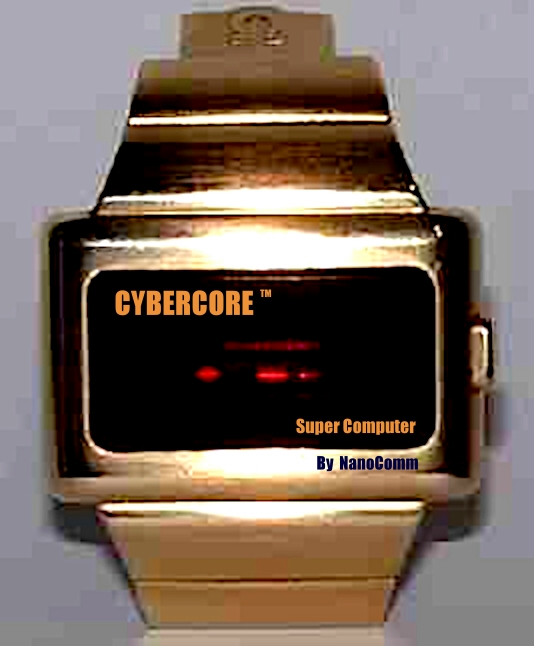|

Clones
of humans have existed in the natural world, since time immemorial. They are
called identical twins. Though while physically identical, their interests
and character, might be completely different. All the product of who they
live with, their friends and other social factors. The prototype Replivator
clone incubator, shown above, is not the final product used to reincarnate
Cleopatra.
INCUBUS
The Incubus™
is a state of the art artificial womb, invented by Franco Francisco, designed to grow human
babies from female eggs. His groundbreaking research and experimentation was
funded by Neuwelt
Rittertum. The controlled environment enables rapid development of an embryo from an
electo-fertilized egg in a mechanical
surrogate mother, sometime referred to as a cloning oven.
REPLIVATOR
The
Replivator™ is a full, adult size chamber designed to house a biopolymer
skeleton and other synthetic body parts, as a mesh, or sponge to hold induced pluripotent stem cells
(iPSCs). In these machines the human subject is not born, as in the Incubus
cloning incubators, but grows into a fully adult specimen, ready to have
their brains conditioned, and memories uploaded. This is the technology the
cohort of scientists use to breathe life into the poly-mesh, and give
validity to Cleopatra's
prophesy, that she will one day be reborn.
The
group know that the real challenge is to create realistic memories
for Cleopatra, as implants, such that she will think and act like the former
Pharaoh queen of ancient
Egypt.
This
all depends on the quality of research and the depth of the CGI
imagery, that is used to educated the excellent brain of the reincarnated
subject. It is important that memories are fed to Cleopatra in the correct
sequence, and then when she returns to her present surroundings she is
treated accordingly.
The
digital programming regime takes over a month of constant playing of docu-drama
style uploads. This is supplemented by in person training sessions, like an
actor learning their part. Fortunately, the replicated queen is a quick
study, and eager to learn.


[LEFT]
OMEGA 1600 TC1 TIME COMPUTER LED 1973
- Omega "Time Computer I" aka TC1 is the first LED watch ever available for sales in Europe.
Omega did not enter into the research field of digital watches, but subcontracted
design of this LED watch to fill the gap in their portfolio. Omega TC's are based on Pulsar technology and contain late P2 modules that can be
transplanted from corresponding Pulsars and Hamiltons. The cases were American made by
the Star Watch Case Company with the magnetic-button Pulsar concept. In our
story, Will
Bates was gifted this classic timepiece from his father, when he was a
child. The digital display so fascinated him, that when the electronic
module failed, he thought to use the casing for his super-computer
masterpiece: CyberCore
Genetica.
When Hal
gets hooked up to this device, the AI becomes self aware, but unlike 'Skynet,'
in the 'Terminator' series,
is a human-friendly member of the Elizabeth Swann crew.
[RIGHT]
BIOCORE
- The most advanced biological human interface, allows a person to
communicate with suitably adapted super computers, just by thinking
commands. The dream of telepathy has finally come true. But, the technology
is top secret, and light years away from the marketplace. John Storm,
Cleopatra and Dan Hawk, deem this tech too dangerous. Especially, if the
military got hold of it, and corrupt governments, looking to further
financially enslave their workforce.
|
CHARACTERS
- PROTAGONISTS |
|
DESCRIPTION |
| ... |
|
... |
|
Abdullah
Amir |
|
Middle
eastern marine captain |
|
Ahmed
Saleh - Port of El Dekheila |
|
Fisherman
who finds location Cleopatra's tomb |
|
Anubis -
Protector of the Afterlife |
|
God
of death, guardian of Cleopatra's tomb |
|
Ark,
The
|
|
Interactive
DNA database |
|
Captain
Nemo
|
|
Interactive
autonomous navigation system |
|
Charley
Temple
|
|
Adventurous
researcher
& cameraman |
|
Charmian
|
|
Cleopatra's
loyal handmaiden & companion |
|
Cleopatra,
last Pharaoh queen of Egypt reborn |
|
The
reincarnated Mummy |
|
CyberCore
Genetica |
|
Nano
super computer, world's fastest |
|
Dan
Hawk
|
|
Electronics
wizard & 2nd mate E. Swann |
|
Dr
Roberta (Bobbie) Treadstone |
|
Blue
Shield ocean division, Newcastle Uni |
|
Elizabeth
Swann
|
|
World's
most advanced AI hydrogen ship |
|
Excalibur,
Merlin & Pendragon
|
|
Anti-piracy
laser & taser weapons system |
|
George
Franks
|
|
Estate
trustee |
|
Hal
|
|
Advanced
onboard Artificial Intelligence |
|
Honest
Johnson
|
|
Edward
John Thomas, British Prime Minister |
|
Incubus™
& Replivator™ machines
|
|
High
tech cloning & replicating equipment |
|
Iras
|
|
Cleopatra's
loyal hairdresser & companion |
|
Isis
|
|
Egyptian
Goddess of Life |
|
Jack
Mason |
|
CIA
contact, sometime double agent |
|
Jane
Eleanor Knight-Austen |
|
Common
law partner of Will Bates |
|
Jill
Bird |
|
BBC
news anchor, overseas services |
|
John
Storm
|
|
Explorer/conservationist/anthropologist |
|
Julius
Caesar
|
|
Roman
general who loved Cleopatra |
|
King
Charles III
|
|
British
monarch, Commander in Chief |
|
Kitty
Kat (Katie)
|
|
Ships
cat and mascot, who loves fishing |
|
Marjorie
Boyle |
|
Backpacker/blogger,
Trinidad |
|
Mark
Antony |
|
Lover's
suicide pact with Cleopatra |
|
Pope
Peter Benedict
|
|
Roman
Catholic Pontiff, Vatican City, Rome |
|
Professor
Douglas Storm
|
|
Genius
& great uncle to John Storm |
|
Professor
Jacques Pierre Daccord |
|
UNESCO,
subsea archaeology division |
|
Sam
Hollis |
|
Reporter,
Trinidad Bugle |
|
Steve
Green (Greeno)
|
|
Freelance
investigative bloodhound |
|
Suki
Hall (Suzuki)
|
|
Marine
biologist |
|
US
President Lincoln George Truman |
|
Supreme
commander US military |
|
William
Bates (Billy the Kid) |
|
US
computer genius & CyberCore
Genetica™ |
|
... |
|
... |
|
CHARACTERS
- ANTAGONISTS |
|
DESCRIPTION |
|
... |
|
... |
|
Adolf
Hitler - (Circle of Six) |
|
WWII
3rd Reich & reserve 4th Reich architect |
|
Alexis
Luther - Panama |
|
The
Panamanian running man, a replicant |
|
Baron
Heinrich Richthofen |
|
Obsessed
4th Reich, Neo
Nazi occultist |
|
Erwin
Rommel - (Circle of Six) |
|
WWII
Afrika Korps, Field Marshall |
|
Franco
Francisco |
|
Italian
scientist, cloning expert |
|
General
Sir Rodney Dunbar |
|
Head
of MI6 human enhancement |
|
Harold
(Dirty Harry) Holland |
|
Chief
Constable, Scotland Yard |
|
Hermann
Göring - (Circle of Six) |
|
WWII
Luftwaffe Reichsmarschall |
|
Husani
Hassan |
|
President
elect of Egypt |
|
Iras
Charmian |
|
Director
NIC National Intelligence Agency USA |
|
Joseph
Mengele - (Circle of Six) |
|
WWII
Nazi Dr. Human selective breeding expt. |
|
Karl
Donitz - (Circle of Six) |
|
WWII
Nazi submarine captain |
|
Martin
Borman - (Circle of Six) |
|
WWII
Nazi administrator/manager |
|
Klaus
von Kolreuter |
|
Swiss
scientist, human genome expert |
|
Musa
Bomani |
|
Hired
Egyptian
tomb raider |
|
Nicholas
(Nick- The Devil) Johnson MP |
|
UK
Minister for Defence |
|
Octavian |
|
Roman
emperor waged war on Cleopatra |
|
Roberto
Ferrara |
|
Italian
spy Vatican & Interpol, double agent |
|
Rudolf
Kessler |
|
Nazi
Egyptologist/archaeologist |
|
Safiya
Sabuka |
|
Isis
worshiper, descendant of Cleopatra |
|
Sergeant
Shaun Flanagan |
|
Police
officer, Scotland Yard |
|
Stefan
Raengst, Doctor |
|
DARPA
Director, super-soldier programme |
|
|
|
|

LIVESCIENCE 9 MAY 2022
- WHY HAVEN'T WE
CLONED HUMANS YET?
Is it for ethical reasons or are there technological barriers?
In 1996, Dolly the sheep made headlines around the world after becoming the first mammal to be successfully cloned from an adult cell. Many commentators thought this would catalyze a golden age of cloning, with numerous voices speculating that the first human clone must surely be just a few years away.
Some people suggested that human clones could play a role in eradicating genetic diseases, while others considered that the cloning process could, eventually, eliminate birth defects (despite research by a group of French scientists in 1999 finding that cloning may actually increase the risk of birth defects).
There have been various claims — all unfounded, it is important to add — of successful human cloning progams since the success of Dolly. In 2002, Brigitte
Boisselier, a French chemist and devout supporter of Raëlism — a UFO religion based on the idea that aliens created humanity — claimed that she and a team of scientists had successfully delivered the first cloned human, whom she named Eve.
However, Boisselier was unwilling — or indeed unable — to provide any evidence, and so it is widely believed to be a hoax.
So why, almost 30 years on from Dolly, haven't humans been cloned yet? Is it primarily for ethical reasons, are there technological barriers, or is it simply not worth doing?
"Cloning" is a broad term, given it can be used to describe a range of processes and approaches, but the aim is always to produce "genetically identical copies of a biological entity," according to the National Human Genome Research Institute
(NHGRI).
Any attempted human cloning would most likely utilize "reproductive cloning" techniques — an approach in which a "mature somatic cell," most probably a skin cell, would be used, according to
NHGRI. The DNA extracted from this cell would be placed into the egg cell of a donor that has "had its own DNA-containing nucleus removed."
The egg would then begin to develop in a test tube before being "implanted into the womb of an adult female," according to
NHGRI.
However, while scientists have cloned many mammals, including cattle, goats, rabbits and cats,
humans have not made the list.
"I think there is no good reason to make [human] clones," Hank Greely, a professor of law and genetics at Stanford University who specializes in ethical, legal and social issues arising from advances in the biosciences, told Live Science in an email.
"Human cloning is a particularly dramatic action, and was one of the topics that helped launch American bioethics," Greely added.
The ethical concerns around human cloning are many and varied. According to Britannica, the potential issues encompass "psychological, social and physiological risks." These include the idea that cloning could lead to a "very high likelihood" of loss of life, as well as concerns around cloning being used by supporters of eugenics. Furthermore, according to Britannica, cloning could be deemed to violate "principles of human dignity, freedom and equality."
In addition, the cloning of mammals has historically resulted in extremely high rates of death and developmental abnormalities in the clones, Live Science previously reported.
Another core issue with human cloning is that, rather than creating a carbon copy of the original person, it would produce an individual with their own thoughts and opinions.
"We've all known clones — identical twins are clones of each other — and thus we all know that clones aren't the same person," Greely explained.
A human clone, Greely continued, would only have the same genetic makeup as someone else — they would not share other things such as personality, morals or sense of humor: these would be unique to both parties.
People are, as we well know, far more than simply a product of their DNA. While it is possible to reproduce genetic material, it is not possible to exactly replicate living environments, create an identical upbringing, or have two people encounter the same life experiences.

Would cloning humans have any benefits?
So, if scientists were to clone a human, would there be any benefits, scientific or otherwise?
"There are none that we should be willing to consider," Greely said, emphasizing that the ethical concerns would be impossible to overlook.
However, if moral considerations were removed entirely from the equation, then "one theoretical benefit would be to create genetically identical humans for research purposes," Greely said, though he was keen to reaffirm his view that this should be thought of as "an ethical non-starter."
Greely also stated that, regardless of his own personal opinion, some of the potential benefits associated with cloning humans have, to a certain degree, been made redundant by other scientific developments.
"The idea of using cloned embryos for purposes other than making babies, for example producing human embryonic stem cells identical to a donor's cells, was widely discussed in the early 2000s," he said, but this line of research became irrelevant — and has subsequently not been expanded upon — post-2006, the year so-called induced pluripotent stem cells
(iPSCs) were discovered. These are "adult" cells that have been reprogrammed to resemble cells in early development.
Shinya Yamanaka, a Japanese stem cell researcher and 2012 Nobel Prize winner, made the discovery when he "worked out how to return adult mouse cells to an embryonic-like state using just four genetic factors," according to an article in Nature. The following year, Yamanaka, alongside renowned American biologist James Thompson, managed to do the same with human cells.
When iPSCs are "reprogrammed back into an embryonic-like pluripotent state," they enable the "development of an unlimited source of any type of human cell needed for therapeutic purposes," according to the Center of Regenerative Medicine and Stem Cell Research at the University of California, Los Angeles.
Therefore, instead of using embryos, "we can effectively do the same thing with skin cells," Greely said.
This development in iPSC technology essentially rendered the concept of using cloned embryos both unnecessary and scientifically inferior.
Nowadays, iPSCs can be used for research in disease modeling, medicinal drug discovery and regenerative medicine, according to a 2015 paper published in the journal Frontiers in Cell and Developmental Biology.
Additionally, Greely also suggested that human cloning may simply no longer be a "sexy" area of scientific study, which could also explain why it has seen very little development in recent years.
He pointed out that human germline genome editing is now a more interesting topic in the public's mind, with many curious about the concept of creating "super babies," for example. Germline editing, or germline engineering, is a process, or series of processes, that create permanent changes to an individual’s genome. These alterations, when introduced effectively, become heritable, meaning they will be handed down from parent to child.
Such editing is controversial and yet to be fully understood. In 2018, the Council of Europe Committee on Bioethics, which represents 47 European states, released a statement saying that "ethics and human rights must guide any use of genome editing technologies in human beings," adding that "the application of genome editing technologies to human embryos raises many ethical, social and safety issues, particularly from any modification of the human genome which could be passed on to future generations."
However, the council also noted that there is "strong support" for using such engineering and editing technologies to better understand "the causes of diseases and their future treatment," noting that they offer "considerable potential for research in this field and to improve human health."
George Church, a geneticist and molecular engineer at Harvard University, supports Greely's assertion that germline editing is likely to garner more scientific interest in the future, especially when compared with "conventional" cloning.
"Cloning-based germline editing is typically more precise, can involve more genes, and has more efficient delivery to all cells than somatic genome editing," he told Live Science.
However, Church was keen to urge caution, and admitted that such editing has not yet been mastered.
"Potential drawbacks to address include safety, efficacy and equitable access for all," he concluded.
By Joe Phelan
|



